Tata Tigor [2017-2018] Revotorq XE
- Tigor [2017-2018]
- 360° View
- Specs & Features
- Variants
- Colours
- User Reviews
Tata Tigor [2017-2018] Revotorq XE Review
With the success of the Tiago, Tata seems even more confident of the Tigor doing well (which is essentially a compact sedan version of the hatch). Despite the recent lull for sedans in favour of crossovers, the Indian manufacturer is sure of enticing the Indian buyer with its coupe like roofline and expected aggressive pricing.
What is it?

With the success of the Tiago, Tata seems even more confident of the Tigor doing well (which is essentially a compact sedan version of the hatch). Despite the recent lull for sedans in favour of crossovers, the Indian manufacturer is sure of enticing the Indian buyer with its coupe like roofline and expected aggressive pricing.
In terms of appearance, the Tigor doesn't look like a compromise as most its sub-4-metre rival’s look. The boot section is neatly integrated and thanks to the swooping roofline, it gives the Tigor a fastback like silhouette. Tata designers have also broken the rounded shape of the roofline with the integrated spoiler which avoids monotony. The boot design is done tastefully too, with the LED effect wrap-around tail lamps and the chrome strip running across lends it a premium look. Upfront front the Tigor looks exactly the same as its hatch sibling, albeit some cosmetic additions. So you get the same signature Tata smiling mesh grille with hexagonal elements and the sweptback headlamps which now are blackened out and has projector element which makes it more premium. The profile is dominated by the mildly flared wheel arches, diamond cut larger alloy wheels (only on the petrol variant) and the prominent crease running across the shoulder which lends it a sporty stance.

In terms of dimensions, the Tigor is 246mm longer than the Tiago and has a wheelbase that has been extended by 50mm to generate more kneeroom at the back. The Tigor petrol weighs at 1062kg and 1130kg for the diesel which has gone up by around 50kg over the Tiago.
How is it on the inside?

As expected the Tigor shares much of the interior elements with the Tiago. The dashboard looks really smart with the smart dash-layout and neat instrumentation console. The new touchscreen infotainment system further add to the premium look. The hexagonal theme from the exterior continues inside with the centre console, speaker grille and the steering boss design. Quality, especially on the upper portions of the dashboard and the door pads, is nice with the fish skin-like graining. Tata have also improved on touch points like on the door hand rests, which has a soft touch fabric for better comfort. Lower down, the plastics do look a bit hard and panel gaps aren’t consistent. We expected Tata to take a step further in terms of quality in the Tigor, as the higher asking price will put it up against cars especially from Hyundai, which set benchmark in this respect.

Tata have done a good job with the comfort up front and the seats are well contoured and you sit at a good height. But the driving position is not the most comfortable as the steering is placed too high and close to you. Thanks to the longer wheelbase, the rear seats are pushed back to liberate more knee room. As a result space at the rear is really good and despite the slopping roofline headroom is adequate too. The scooped out front seats and thin door pads further add precious millimetres to overall width and space. But like in the Tiago you do sit a bit low which affects under thigh support and the fact that the seat squab is on the shorter side further accentuates this deficiency. The more reclined backrest helps you sit in a more comfortable manner as compared to the Tiago. We would have also liked Tata to offer adjustable rear headrests to avoid whiplash injuries. In terms of practicality Tata has put in a lot of effort and have claimed to have 24 stowage elements in the cabin but all of them are a bit too shallow and narrow. At the rear you don’t get seatback pockets and the sloping parcel shelf makes it unusable too. Although the swooping design has compromised the boot opening, the double hinged design means, there are hardly intrusions and the 419 litre boot is well shaped and usable.

We only had the top-of-the-line XZ trim of the Tigor and it came loaded with features. Apart from the regulars like power-steering, power windows etc… the Tigor also comes with a sweet sounding Harman developed eight speaker music system, which can be played through aux-in, USB, SD card and Bluetooth connectivity. The Tigor also gets a touchscreen system that is not the smoothest of units as far as speed and touch sensitivity is concerned. Although you don’t get an inbuilt navigation system, you can pair your smartphone by downloading the CONNECTNEXT app which mirrors things like Sat-Nav (Map My India maps) onto the screen. The preloaded maps means you won’t drain through your mobile data but with back to back tests with Google Maps revealed it’s not the most accurate. The infotainment system also doubles up as a reversing camera screen, which combined with the parking sensors make up for the restricted rear view from the cabin. As far as safety goes, the Tigor gets two airbags and ABS with EBD in the top variant.
How does it drive?
The Tigor is powered by the same pair of three-cylinder engines – a 1.2 petrol and a 1.0 litre turbo-diesel as in the Tiago.

The diesel motor on the Tigor displaces a modest 1047cc, which is good for 69bhp and has a torque output of 140Nm (same as the Tiago). To counter the extra weight, Tata engineers have opted for shorter gear ratios, to make it feel as peppy as its hatch sibling. During relaxed driving around Delhi, the Tigor diesel felt impressive, right from the time you start it. The engine settles down to a smooth idle, although you do feel vibrations from the 3-cylinder motor. As soon as you let go off the clutch the Tigor was happy to amble along at slow speeds. The engine has a sweet spot between 1900-3000rpm giving it a useful mid-range. On the downside there is no punch in the proceedings. There is no point in revving the engine to its red-line too as it just makes more noise without adding much in terms of pace.
When driven in Eco mode it feels adequate at city speeds, but anything faster then you just keep hunting through the gearbox to make swift progress. The engine refinement which is impressive at low revs, changes for the worse once you are on an open road. The three-cylinder diesel thrum becomes apparent and the shortfall in displacement also becomes obvious as quick overtaking manoeuvres requires planning.

We liked the three-cylinder petrol engine more in comparison. The 1199cc motor produces a healthy 83.8bhp and 114Nm of torque and Tata have added balancer weight to make it smoother as compared to the Tiago. It is a modern motor with all-aluminium construction and variable valve timing, albeit just for intake port for better breathing. You do feel some vibrations at idle but as soon as you start moving, the engine smoothens out and as long as you don’t rev it hard, this motor is pretty silent. The Tigor doesn’t hesitate off the line and the engine pulls cleanly from low speeds. The motor doesn’t have a strong bottom end but once past 2500rpm, it feels responsive and the motor gets a second wind around 5200rpm. The performance on the highway though feels modest, especially with a full load of passengers. The gearbox is smooth enough but it has long throws and it doesn’t feel as crisp or precise as the diesel unit. We also tried out both the Eco and City modes and at low speeds there is not much of a difference, while past 3000rpm it feels noticeably flat and its best to shift to city mode out on an open stretch.

In terms of ride, the Tigor feels well sorted. While the ride feels on the firmer side at low speeds, it feels well controlled and the suspension functions silently. Up the speed and the Tigor gives you a big car feel thanks to its flat ride.. It only pitches a bit over long undulating surfaces but never to a point of feeling uncomfortable. And straight-line stability is good too, making this car ideal for long distances. Thanks to the longer wheelbase we felt the Tigor felt slightly more stable than the Tiago going through long corners and felt surefooted with no nasty surprises. The steering is engineered for an inexperienced driver with lot of slack around the centre ahead position and is not the sportiest as far as handling prowess goes. The brakes like on the Tiago are more than adequate with good progressive pedal feel and the ABS works seamlessly too.
Should I buy one?

A lot depends, at what price point Tata launches the Tigor. We expect it to cost around Rs 50,000 more than the Tiago which will help it undercut all the sub-four metre sedans by a massive margin. Although the Tigor is not perfect, a surprisingly low price, will surely make the Tigor a compelling proposition. The price is not only the element which will make the Tigor a good buy come 28th of March. Things like the well-specced features list, pliant ride, striking design and a spacious cabin makes it a well-rounded product too. It seems, Tata have got yet another winner up their sleeve.
Where does it fit in?

The Tata Tigor will rival premium hatchbacks like the Maruti Swift and the Hyundai Grand i10. It will also compete with lower variants of the sub-four metre sedans like the Hyundai Xcent and the Maruti Swift Dzire. We expect the Tigor prices to start around Rs 3.8 lakh for the base petrol and go all the way upto Rs 6.5 lakh ex-showroom Delhi.
Specifications & Features
- Specifications
- Features
- Specifications
- Features
Specifications
Engine & Transmission
- Engine1047 cc, 3 Cylinders Inline, 4 Valves/Cylinder, DOHC
Timely services will keep a motor efficient and in top shape.
- Engine TypeRevotorq, CRAIL with MULTI DRIVE
The official title given by the manufacturer in terms of the name of the engine, the displacement and the number of cylinders.
A bigger displacement and more than four-cylinders generally indicate a performance-oriented engine.
- Fuel TypeDiesel
All cars in India either run on petrol, diesel, CNG, LPG or electric power.
- Max Power (bhp@rpm)69 bhp @ 4000 rpm
Gives a good idea of the performance of the vehicle under full thrust. A higher figure here usually means a higher top speed as well.
Higher the power, the peppier the engine but it can also affect fuel economy.
- Max Torque (Nm@rpm)140 Nm @ 1800 rpm
Relates to in-gear acceleration. A higher figure here means better roll-on acceleration, fewer gear shifts, and possibly better fuel efficiency.
The more torque at low RPM range makes the engine feel more responsive. It also allows the engine to run smoothly without too many gear changes.
- Mileage (ARAI)24.4 kmpl
This is the maximum fuel efficiency that an engine gives. All numbers are provided by the manufacturer based on tests conducted and specified by the standards of the ARAI (Automotive Research Association of India)
Such fuel efficiency attained while driving in special conditions makes it unlikely to get it in real-world conditions
- DrivetrainFWD
Cars come with different drivetrain configurations depending on the segment.
Front-wheel drive (FWD) is most common in mainstream cars while expensive cars or SUVs come with rear-wheel drive (RWD) or all-wheel drive (AWD).
- TransmissionManual - 5 Gears
Type of transmission used to transfer power from the engine to the wheels
A manually operated transmission is the most popular type, thanks to its simplicity and low cost. Varied types of automatic transmissions are also available.
- Turbocharger / SuperchargerTurbocharged
Manufacturers today offer turbochargers to boost engine power without affecting its fuel economy. Superchargers are found in more expensive cars but on the downside, they are not very efficient.
Turbochargers are more effective but require plenty of heat management. Superchargers, meanwhile, offer linear bump in power but they are comparatively more complex.
Dimensions & Weight
- Length3992 mm
The length of the car decides its segment. In India, cars that are less than 4 metres in length enjoy reduced excise duties.
- Length: 3992
Longer length results in more cabin space. It also adds to straight line stability.
- Width1677 mm
A car's width is defined as its widest point without its mirrors.
- Width: 1677
Although more width gives you more lateral space inside the cabin, it makes the car more difficult to park in narrow spots.
- Height1537 mm
The height of the car denotes the highest point of the vehicle from the ground.
- Height: 1537
Taller the car, the more headroom there is on offer inside the cabin. However, a tall boy stance also affect the car’s centre of gravity which can cause more body roll.
- Wheelbase2450 mm
The space between the center of the front and rear wheels.
- Wheelbase: 2450
The longer the wheelbase, the more space there is inside the cabin.
- Ground Clearance170 mm
It’s the space between the lowest point of the car and the ground.
- Ground Clearance: 170
If the car has a good amount of clearance, it’s easier for it to clear big speed breakers and overall, deal with bad roads.
- Kerb Weight1100 kg
The total weight of the vehicle with all the standard equipment and all the required fluids.
A lightweight car will always be more efficient and easier to manoeuvre whereas a heavy car would give you a sense of solidity while driving.
Capacity
- Doors5 Doors
The number of doors define the category of car. For example – four door means sedan, two-door means coupe while five-doors usually refer to a hatchback, MPV or an SUV.
- Seating Capacity5 Person
The number of people that can be seated comfortably in the car, which has also been mandated by the car manufacturer.
- Seating Capacity: 5
- No of Rows2 Rows
Smaller cars usually have two rows which can seat five, but some SUVs and MPVs have three rows and can seat around 7-8 passengers.
- Bootspace419 litres
Boot space defines how practical the car is with respect to how much luggage it can carry.
- Bootspace: 419
A boot with a large and wide opening is ideal for loading heavy items. Additionally, a lower loading height also makes it easy to put in luggage.
- Fuel Tank Capacity35 litres
The official volume of the fuel tank of a car, usually denoted in litres.
If a car has a large fuel tank, it can cover long distances without refuelling.
Suspensions, Brakes, Steering & Tyres
- Front SuspensionIndependent Lower Wishbone, McPherson Strut with coil Spring
Almost all cars in India use an independent front suspension which is usually the MacPherson Strut type.
- Rear SuspensionSemi-Independent; Twist beam with dual path strut
The rear suspension can either be non-independent or independent.
Most of the budget cars have non-independent suspension while the more expensive ones get independent rear suspension which offers better bump absorption.
- Front Brake TypeDisc
Most of the vehicles sold in India get ventilated or non-ventilated disc brakes upfront.
- The ventilated discs are more popular thanks to them providing better stopping power and it also works well in hot conditions.
- Rear Brake TypeDrum
In affordable cars, drums brakes are fitted at the rear as they are cost effective.
Disc setup at the rear is now getting more popular as cars are getting faster in the real world.
- Minimum Turning Radius4.9 metres
The official kerb-to-kerb minimum radius a car takes to complete a 180-degree turn.
Shorter the turning radius, the lesser space you need to make a tight turn or to take a U-turn.
- Steering TypePower assisted (Electric)
Almost all steering systems in cars today have an assist to help park them better at low speeds - these can be hydraulic, electro-hydraulic or electric.
- WheelsSteel Rims
The wheels used on cars are either steel rims with plastic wheel cover hub or alloy wheels on higher spec models or expensive cars.
Razor cut, or diamond cut alloy wheel design are not getting more popular. Manufacturers usually offer these in top-end trim of their car models.
- Spare WheelSteel
Important in a country with varying quality of roads, spare wheels ensure one doesn’t get stranded when one of the main tyres gets damaged.
Select premium car models feature space savers (smaller than the stock wheels) to save on boot space.
- Front Tyres155 / 80 R13
The profile/dimension of rubber tyre that fits on the front wheels.
- Rear Tyres155 / 80 R13
The profile/dimension of rubber tyre that fits on the rear wheels.
Features
Safety
- Overspeed Warning-
Mandatory safety system for cars sold in India, a single beep is emitted after 80kmph and continuous ones after 120kmph
- Emergency Brake Light Flashing-
The brake lights flash in a quick intermittent fashion to indicate to the following vehicles to slow down quicker than usual
- Puncture Repair Kit-
These enable users to repair a puncture effortlessly, saving the time/effort involved in replacing it with the spare wheel
Avoid driving on a flat/deflated wheel too long as it can cause expensive repairs
- NCAP Rating-
The official crash test safety rating given to a car by one of the many testing agencies around the world
- Airbags-
- Rear Middle Three Point seatbeltNo
Safer three-point seatbelts for passengers seated in the middle of the second row of seats.
Budget cars are usually fitted with more economical lap belts for the middle-occupant.
- Tyre Pressure Monitoring System (TPMS)No
A digital gauge that provides the live status of the air pressure in every tyre of a car.
For accurate readings, ensure that the sensors on the rim are not tampered with during any wheel/tyre repairs
- Child Seat Anchor PointsNo
Anchor points or strap systems built into car seats to keep child seats in place, especially during a crash
ISOFIX is an international standard for child seat anchor points, but not all car manufacturers follow this standard
- Seat Belt WarningNo
Mandatory fitment in cars sold in India, emits loud beeps when it detects that occupants are not wearing their seatbelts.
Seat belt warning is mandatory for front-seat occupants, but it is recommended that all occupants wear seat belts.
Braking & Traction
- Anti-Lock Braking System (ABS)No
An electronic system that prevents the tyres from locking and skidding in emergency braking situations by pulsing the brakes (quickly releasing and reapplying the brakes)
ABS is a great accident prevention technology, allowing drivers to steer while braking hard
- Electronic Brake-force Distribution (EBD)No
An electronic system that redirects braking forces among the four brakes to stop the car as quickly and stably as possible
- Brake Assist (BA)No
A system that increases brake pressure to help the car stop quicker
Even when emergency braking, it is observed that drivers don’t apply maximum brake pressure through the pedal, the BA system provides additional pressure to help stop the car quicker
- Electronic Stability Program (ESP)No
System designed to improve car stability and control, especially when the car is accelerating.
ESP or ESC cannot increase traction but rather improve control or help regain control in slippery conditions.
- Hill Hold ControlNo
A feature that prevents the car from rolling backwards when stopped on a slope
- Traction Control System (TC/TCS)No
This system cuts power to those wheels that are spinning without grip/traction
Given the option, keep traction control on all the time.
- Hill Descent ControlNo
A feature that limits the car's speed without any driver input while traversing down descents
Locks & Security
- Engine ImmobiliserYes
A security device that prevents the engine from being started unless the key is present
- Central LockingNo
This feature let's one unlock all the doors remotely or with a key
- Speed Sensing Door LockNo
This feature automatically locks the car's doors when it reaches a preset speed
A convenient feature for those who can't remember to lock the doors
- Child Safety LockYes
Such locks are built into the rear doors to prevent rear seat occupants from opening the doors
Comfort & Convenience
- Air ConditionerYes (Manual)
The different types of air-conditioning systems used to cool the cabin
Maintaining the lowest temperature and first blower speed offers the best results.
- Front AC-
- Rear AC-
- HeaterYes
This feature allows warm air to pass through the air-con vents for heating the cabin
- Vanity Mirrors on Sun VisorsNo
Compact mirrors fitted to the inside of the sunvisor
- Anti-glare MirrorsManual - Internal Only
These mirrors negate the glare from headlight beams of cars behind you
Since a large chunk of people love driving around in their high beam, these mirrors come in handy
- Parking AssistNo
A feature that aids drivers park with ease and greater precision using sensors/cameras
It comes as a boon for drivers who are not used to parking in tight spots
- Parking SensorsNo
Sensors that are usually located on the bumpers of a car to assist/alert the driver while parking
It takes the stress out of manoeuvring in confined spaces
- Cruise ControlNo
A system that automatically controls the speed of the car
- Headlight and Ignition On ReminderYes
An alert that warns one from leaving the car with the headlight and ignition switched on
- Keyless Start/ Button StartNo
When fitted, this system allows the car to be switched on without removing the key from the driver’s pocket or vicinity.
Keyless entry and start/stop (KESS) systems in some cars also include operation via a smartphone.
- Steering AdjustmentTilt
A function where the steering wheel moves up/down, in/out as per the driver's requirement
When both rake and reach adjustments are incorporated, it makes for a tailormade driving position
- 12V Power OutletsNo
This socket provides current to a cigarette lighter style 12 volt plug
It helps charge smartphones, tablets, laptops, rechargeable batteries and other USB chargers. It also powers a compressor that inflates tyres and the humble cigarette lighter!
Telematics
- Find My Car-
An app based feature that allows one to find where their car is located/parked
- Check Vehicle Status via App-
The requisite app will provide information regarding various functions such as speed and fuel alerts
- Geo-fence-
A service that triggers actions like notifications and security alerts when a car enters/leaves a set location
- Emergency Call-
A call that's made automatically by the car to the local emergency services in the event of a crash
- Remote AC: On / Off via App-
The smartphone app turns on the car's AC to attain the required cabin temperature even before one boards it
More so comes in handy when cabin temperatures are extreme before you board the vehicle
- Remote Car Lock/Unlock via App-
The smartphone app allows one to remotely lock/unlock the car's doors from just about anywhere
This function is helpful when the key fob isn't working properly
- Car Light Flashing & Honking via App-
The smartphone app sounds the horn and flashes the headlights of your car so that you can locate it
Seats & Upholstery
- Driver Seat Adjustment-
- Front Passenger Seat Adjustment-
- Rear Row Seat Adjustment-
Rear seat adjustments make for an enlarged luggage space when there's lots of baggage to haul.
- Seat UpholsteryVinyl
When it's time to replace, use a fabric that grips and are inherently cool to the touch
- Leather-wrapped Steering WheelNo
Leather not only grips your palms well, but it also offers a premium feel
- Leather-wrapped Gear KnobNo
- Driver ArmrestNo
The armrest located between the front passengers which helps comfort the driver's arm while driving
- Rear Passenger Seat TypeBench
- InteriorsDual Tone
Depicts if the cabin comes with a single or dual-tone colour scheme
- Interior Colours-
The various color shades used within the cabin
- Rear ArmrestNo
- Folding Rear SeatFull
Some rear seats have the option to be be folded to offer more practicality
- Split Rear SeatNo
Sections of the rear seat are capable of being folded down separately
This function bumps up practicality as the boot space increases when required.
- Front Seatback PocketsYes
The pockets behind the front seats which help rear seat occupants store their stuff
- HeadrestsNo
The portion extending from or fixed to the seat that supports the head
Storage
- Cup HoldersFront Only
- Driver Armrest StorageNo
The storage space within the armrest that's located between the front passengers
- Cooled GloveboxNo
A feature where cool air from the air-conditioner is diverted to the glovebox
- Sunglass HolderNo
Doors, Windows, Mirrors & Wipers
- ORVM ColourBlack
Mirrors that are placed on the car's exterior, around the door, to aid the driver see behind the vehicle
Placing/sticking wide-angle mirrors on the ORVMs can enhance the rear view tremendously.
- Scuff Plates-
This is fitted where the door meets the frame to protect it from scratches and dust
Not using scuff plates may result in the door sill giving away prematurely.
- Power WindowsNo
When the car's windows can be raised/lowered by pressing a button/switch
In emergencies where the power window electronics have jammed, exit the vehicle by kicking out the windscreen
- One Touch DownNo
This feature allows a user to roll down the windows with a single press of a button
This feature reduces the time your hand is away from the steering wheel
- One Touch UpNo
This feature allows a user to roll up the windows with a single press of a button
This feature reduces the time your hand is away from the steering wheel
- Adjustable ORVMsInternally Adjustable
Different ways of adjusting the door mirror to suit the driver's requirement
Tremendously aids driving judgement in a variety of tight situations.
- Turn Indicators on ORVMsNo
Turn indicators are fitted to the door mirrors for improved visibility
- Rear DefoggerNo
A feature that removes condensed water droplets from the rear windscreen to improve visibility
Turning air recirculation off helps gain faster results.
- Rear WiperNo
Although a seemingly minuscule feature, it negates the hatchback's/SUV's inherent ability to retain dirt/water on the rear windscreen.
- Exterior Door HandlesBlack
- Rain-sensing WipersNo
When the system detects water droplets on the windshield, it activates the wipers to improve driver visibility
This feature can be intrusive especially while you are negotiating a tricky bend at a higher speed
- Interior Door HandlesChrome
- Door PocketsFront & Rear
- Bootlid OpenerInternal
The various methods of opening the boot lid
Exterior
- Roof-mounted AntennaNo
The compactness of the roof-mounted antenna prevents its damage in certain situations
- Body-coloured BumpersYes
Having parking sensors will save your bumper paint if it brushes by obstacles
- Chrome Finish Exhaust PipeNo
- Rub-stripsNo
A strip of rubber fitted to the sides of the car's doors or bumpers to prevent dents and dings
Opt for quality strips because the cheaper ones tend to come off too soon/look shabby.
Lighting
- HeadlightsHalogen
- Automatic HeadlampsNo
Such headlights automatically switch on and off when they sense bright or dark driving conditions
Keeping them switched on at all times gives the user the best results
- Follow Me Home HeadlampsNo
The headlamps remain lit for sometime when the car is locked/unlocked to aid user visibility in dark surroundings
- Cornering HeadlightsNo
These lights turn left and right based on steering inputs to illuminate the sides of the car
- TaillightsLED
Inspect tail lamp bulbs at periodic intervals for optimum safety.
- Daytime Running Lights-
Lights that automatically switch on during the day for increased visibility
- Fog Lights-
A type of lamp that improves driver visibility while driving through fog
The yellow/amber fog lights are preferable as they are warm to the eyes and do not reflect from the fog.
- Ambient Interior Lighting-
Additional lighting apart from the roof-mounted courtesy/map lamps. These are added for a sense of style and luxury rather than utility.
- Cabin LampsCentre
- Light on Vanity MirrorsNo
A lamp that's located around the vanity mirror behind the sun visor
- Headlight Height AdjusterYes
Allows adjustment to the height of the headlight beams via a switch on the dashboard
Instrumentation
- Instantaneous ConsumptionNo
It indicates how much fuel is being used that very instant your car is moving
- Instrument ClusterAnalogue
A screen situated mostly behind the steering wheel displaying information and warning lights regarding the car's various vitals
- Trip MeterElectronic 2 Trips
- Average Fuel ConsumptionYes
The amount of fuel consumed by the engine (kmpl) is displayed on the instrument cluster in real time
A glance will help you maintain better fuel efficiency and save money
- Average SpeedYes
The total distance traveled divided by the time taken to cover that distance
The higher the average speed, the quicker you were on that journey/trip
- Distance to EmptyYes
The approximate distance a car will run with the amount of fuel remaining in the tank
- ClockDigital
- Low Fuel Level WarningYes
This alert should be taken as a final warning to head straight to the fuel pump
- Door Ajar WarningYes
A warning light that pops up on the instrument cluster when the doors are not shut properly
- Adjustable Cluster BrightnessNo
The brightness of the instrument cluster can be adjusted via controls
It comes in handy to improve instrumentation visibility between day and night by toggling brightness.
- Gear IndicatorYes
It notifies the driver about which gear the car is being driven in and can also suggest down- or upshifting to improve efficiency
- Shift IndicatorDynamic
Notifies the driver about the optimum instances to shift gears
It comes in handy to derive the best fuel efficiency and engine component longevity
- TachometerAnalogue
An instrument that measures engine speed in revolutions-per-minute (rpm)
Ideally, the tachometer helps a driver know when to shift gears in a manual gearbox.
Entertainment, Information & Communication
- Smart Connectivity-
The ability to connect to the internet and communicate with smart devices to perform various functions
- DisplayNo
A touchscreen or display that acts as a user's interface to the various functions of the car
- Touchscreen Size-
- Integrated (in-dash) Music SystemNo
The music player that comes factory fitted
- SpeakersNo
Number of speaker units as part of a car’s surround-sound system
- Steering-mounted controlsNo
The widely-used controls are placed on the steering wheel to ease driver usage
- Voice CommandNo
When the car's system responds to the occupant's voice to perform certain features
- GPS Navigation SystemNo
A system that uses satellite signals to help the driver with directions to reach a destination
- Bluetooth CompatibilityNo
Allows devices with bluetooth functionality connect wirelessly to the car's infotainment system
Using Bluetooth functionality offers a cable-free experience
- AUX CompatibilityNo
The car's music player can play tracks off a portable device via an aux cable
Bluetooth can make AUX cables look ancient, but unlike the former, there's hardly any loss in sound quality
- AM/FM RadioNo
Is the music system's capability of playing broadcasted radio channels
If radio signals are weak, one can stream music
- USB CompatibilityNo
When tracks can be played from a USB/pen drive
- Wireless Charger-
These pads can charge equipped smartphones without using a cable
Given the option, opt for fast wireless charging.
- Head Unit SizeNot Available
The size of the music system fitted to a car. Traditionally 1-DIN or 2-DIN, are being replaced by touchscreen units of varying sizes.
- iPod CompatibilityNo
- Internal Hard DriveNo
The storage device within the car's infotainment system
Manufacturer Warranty
- Battery Warranty (In Years)-
The number of years the EV battery is covered under the manufacturer's warranty
More the years, the better
- Battery Warranty (In Kilometres)-
The number of kilometres the EV battery is covered under the manufacturer's warranty
More the kilometres, the better
- Warranty (In Years)2
The automaker can void the vehicle's warranty if the owner has fitted aftermarket components.
- Warranty (In Kilometres)100000
The automaker can void the vehicle's warranty if the owner has fitted aftermarket components.
Other Tigor [2017-2018] Variants
| Variants | Price | Specifications | Specifications | |
|---|---|---|---|---|
Rs. 6.05 Lakh | 5 Person, FWD, 140 Nm, 170 mm, 1100 kg, 419 litres, 5 Gears, Revotorq, CRAIL with MULTI DRIVE, No, 35 litres, No, No, No, 3992 mm, 1677 mm, 1537 mm, 2450 mm, 140 Nm @ 1800 rpm, 69 bhp @ 4000 rpm, No, Yes (Manual), No, 0, No, 0, No, No, No, No, 0, 5 Doors, 24.4 kmpl, Diesel, Manual, 69 bhp | Get Offers from Dealers |
Similar Cars

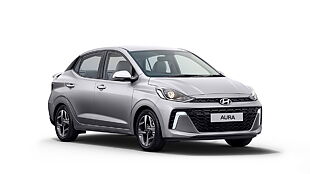
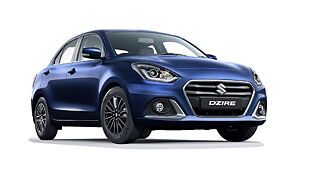
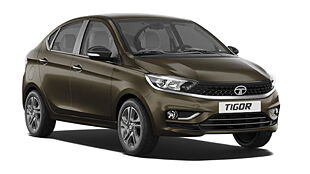


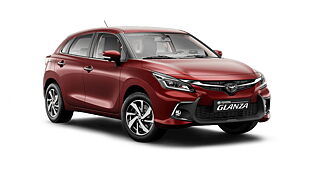
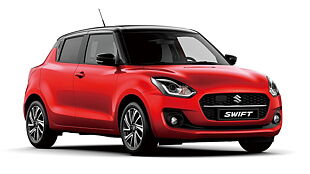
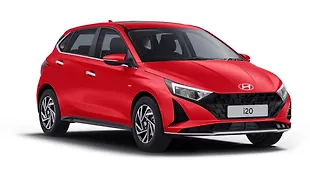
Colors
Reviews
- (1 Ratings) 1 Reviews
5.0/5
- Awesome FeelExterior Feels awesome, new fresh look by TATA. Interior (Features, Space & Comfort) Much better experience than previous Cars by TATA. Engine Performance, Fuel Economy and Gearbox Engine Performance is not that much expected compared to Desire / Xcent. As Tigor has 1.05 engine. But actual output is awesome. Never faces lagging issues. Fuel economy is just awesome. Got 21 KMPL on highway after 1st start. had awesome experience for driving 900Kms on next day after delivery. Ride Quality & Handling Riding is smooth caus of its small & comfirtable steering wheel. Tyres size is also compatible comparing to Height & length. Suspensions also best in class. Final Words Its a compact & new style sedan by TATA. after sale service is also improving. Best vehicle in low budget criteria. Areas of improvement Till Now everything is Up to the mark.Steering, handeling, Boot Space, Comfirtable seating positionEngine Noise, Engine Capacity 1.0 ltrRating parameters(out of 5)5
Exterior
5Comfort
5Performance
5Fuel Economy
5Value For Money
About the ReviewerPurchase NewDriven forFew thousand kilometersMileage21 kmplRead MoreWas this review helpful?10
- Home
- Tata Cars
- Tigor [2017-2018]
- Revotorq XE



![Tata Tigor [2017-2018] Revotorq XE Tata Tigor [2017-2018] Revotorq XE](https://imgd.aeplcdn.com/664x374/cw/ec/20014/Tata-Tigor-Exterior-118817.jpg?wm=0&q=80)
![Tata Tigor [2017-2018] Right Front Three Quarter Tata Tigor [2017-2018] Right Front Three Quarter](https://imgd.aeplcdn.com/664x374/cw/ec/20014/Tata-Tigor-Right-Front-Three-Quarter-93563.jpg?v=201711021421&q=80)
![Tata Tigor [2017-2018] Right Rear Three Quarter Tata Tigor [2017-2018] Right Rear Three Quarter](https://imgd.aeplcdn.com/664x374/cw/ec/20014/Tata-Tigor-Right-Rear-Three-Quarter-108316.jpg?v=201711021421&q=80)

![Tata Tigor [2017-2018] Rear View Tata Tigor [2017-2018] Rear View](https://imgd.aeplcdn.com/664x374/cw/ec/20014/Tata-Tigor-Rear-view-108315.jpg?v=201711021421&q=80)
![Tata Tigor [2017-2018] Left Rear Three Quarter Tata Tigor [2017-2018] Left Rear Three Quarter](https://imgd.aeplcdn.com/664x374/cw/ec/20014/Tata-Tigor-left-rear-three-quarter-108314.jpg?v=201711021421&q=80)
![Tata Tigor [2017-2018] Left Side View Tata Tigor [2017-2018] Left Side View](https://imgd.aeplcdn.com/664x374/cw/ec/20014/Tata-Tigor-Left-Side-View-108313.jpg?v=201711021421&q=80)